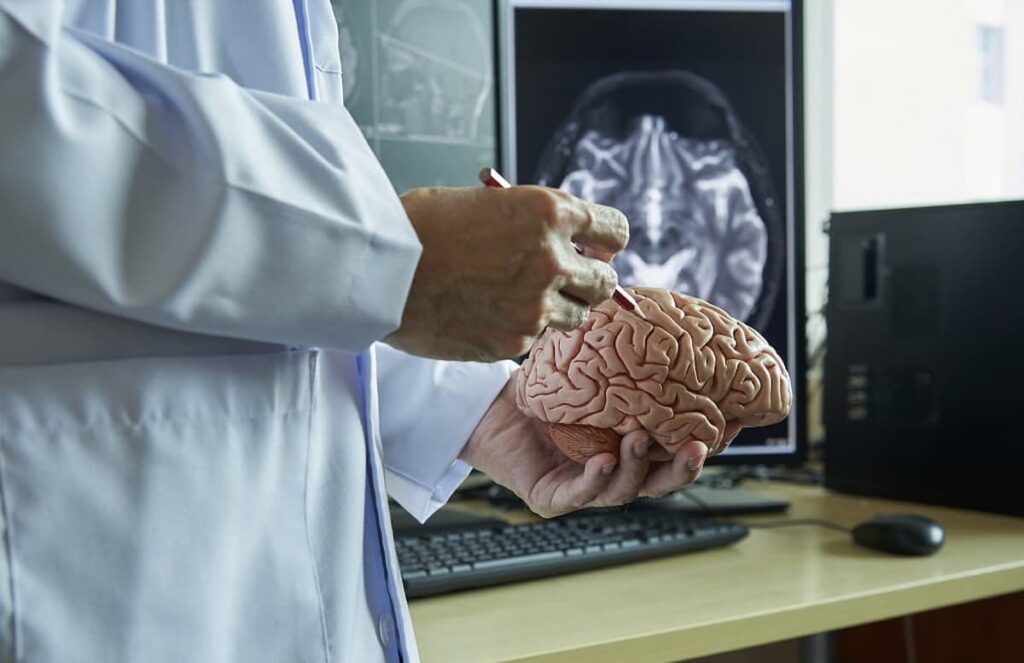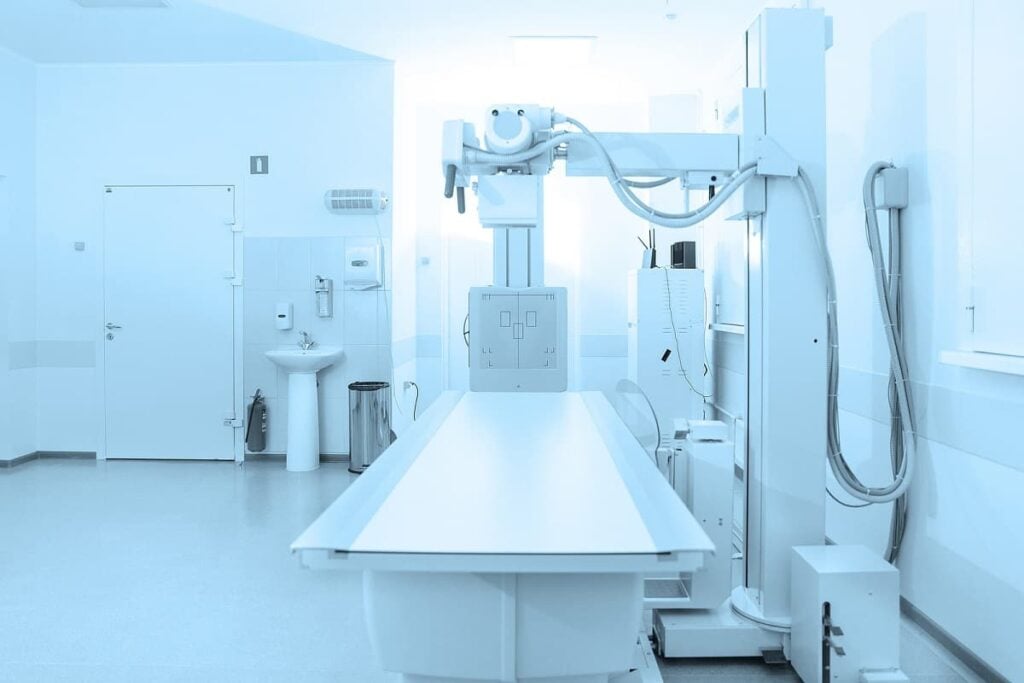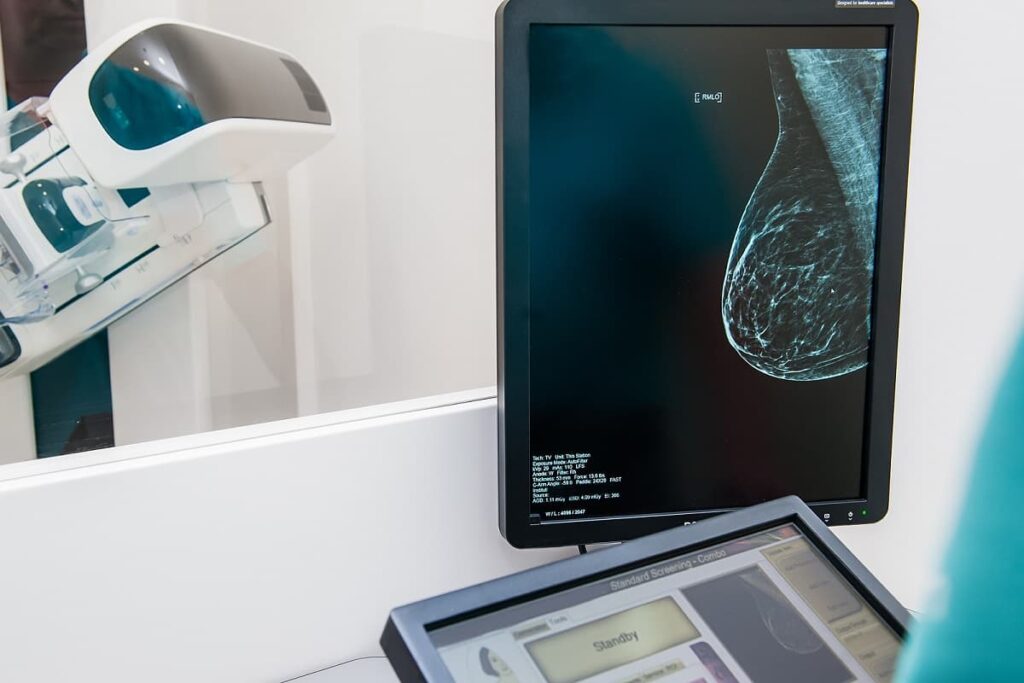A 3D Printing Medical Device Company for 3D Models
Table of contents

The emerging technologies that we cover on Nanalyze are poised to disrupt almost every industry on the planet, which is perhaps why just about every business on the planet has started calling itself a technology company. Perhaps no industry will experience this seismic shift more than healthcare. We’ve been covering a ton of AI healthcare startups automating everything from clinical trials to hospital operations. Surgeons are increasingly relying on augmented reality and robotic devices to help them in the OR. Major medical device companies like Stryker (SYK) are investing heavily in these and other technologies, including 3D printing for implants. Today we want to dive into a 3D printing medical device company called Axial3D that creates patient-specific 3D models to improve surgical outcomes.
3D Printing in Healthcare
We recently profiled a Boston area 3D printing startup called Formlabs, which in just four years went from Kickstarter campaign to billion-dollar startup. Dental and medical applications account for about one-third of the company’s $100 million annual revenue rate, prompting Formlabs to release a 3D printer designed specifically for healthcare professionals. While dentistry is probably the most common healthcare-related application for 3D printing today, it’s certainly not the only one. There are companies using 3D printers to build prosthetics, for example, as well as truly revolutionary applications, such as 3D bioprinting new organs.

The U.S. Food and Drug Administration (FDA), the government agency in charge of approving medical devices for use, has a whole section on its website about 3D printing. It breaks down commercially available 3D printed medical devices into three categories:
- Instrumentation (e.g., guides to assist with proper surgical placement of a device)
- Implants (e.g., cranial plates or hip joints)
- External prostheses (e.g., hands)
Many of the devices are called patient-matched or patient-specific devices, which are created from an individual patient’s imaging data, according to the FDA. This is where Axial3D comes in.
A 3D Printing Medical Device Company for 3D Models

Benefits of 3D Printing for Patient-Specific 3D Models
Basically, the company takes medical scans from patients to make 3D-printed models of a piece of anatomy that offers a precise layout of bones or blood vessels, for example, that a surgeon can review prior to an operation. Again, this is very similar to how augmented reality is being used to model patient anatomy prior to surgery. Axial3D says there are five distinct advantages to using a 3D-printed model:
- Enhanced insight into the pathology: An exact replica can provide a hands-on view of the anatomy in context.
- Reduced theater time: Axial3D claims its customers save 30 to 60 minutes of surgery time, with some cases showing five-plus hours saved.
- Preoperative trials and simulation: 3D-printed patient-specific models support physical simulations of surgery, saving time and increasing the surgeon’s confidence
- Improved patient communication: Patient experience and consent are increased by seeing and holding models of their anatomy, aiding in consent discussions
- Improved training and education: Educating and training new physicians, especially when dealing with complex pathological conditions.
Axial3D says radiology, in particular, is the profession that stands to benefit most from 3D-printed anatomical models. As you probably know, radiologists are doctors that specialize in using medical imaging, such as X-rays or MRIs, to diagnose and help treat patients. It’s their role to interpret the imagery and consult with doctors and surgeons on treatment. 3D-printed anatomical models would be another tool in the surgical toolbox for doctors, just as AI is helping radiologists interpret medical scans.
How Axial3D Produces 3D-Printed Anatomical Models
Speaking of AI: The process for creating these 3D-printed anatomical models begins with artificial intelligence. We’ll give you the thumbnail version of the workflow with the help of a blog post from Craig Brashaw, medical visualization engineer at Axial3D.
First, a two-dimensional image is processed through Axial3D’s AI algorithm, an image processing neural network. Segmentation refers to the process of identifying objects and their boundaries within an image. In the case of a medical image for 3D printing, this is a specific part of anatomy. As Brashaw explains further: “When an image is fully segmented, all the pixels in the image have a label that corresponds to a piece of anatomy or part of scanning machinery that is visible within the image.” The software can automatically denote bone versus muscle versus organ, a task that was previously done by a team of five medical visualization engineers and requiring up to four hours per print.

Those same humans remain in the loop to ensure 100% accuracy, refining the data down to individual pixels. They can also tweak the model based on where there may be a need for more or less detail depending on the needs of the surgeon. There’s another round of quality control before the model moves onto the 3D pre-processing stage. Then it’s time to add any customer-requested customizations, followed by yet another round of quality checks. Finally, the printable file is ready to send to a 3D printer, either at Axial3D’s in-house 3D print lab (using Formlabs 3D printers) or at the hospital’s 3D printer. The whole process takes 48 hours or less, with an accuracy down to one-tenth of a millimeter, which is something like 0.004 inches. After all, it is brain surgery.
Case Studies and Research Into 3D-Printed Models
In fact, one case study using a 3D-printed model covered by a local newspaper in Tallahassee involved a brain aneurysm. A salt-of-the-Earth-kind-of-guy named William Jerome Golden Sr., who had worked the same job for 24 years to take care of his family, had been experiencing severe headaches. A CT scan revealed a dangerous cerebral aneurysm in Golden’s head, according to the article. Long story short: The type of aneurysm was extremely complicated, and the medical professionals who treated Golden credited the Axial3D model for helping make the surgery a success.

Here are a few additional case studies where a 3D-printed anatomical model helped save the day:
- Surgeons saved two hours in the OR treating a patient with a severe spinal cord condition.
- Surgeons were able to revamp their game plan for a procedure on a baby girl born with a congenital heart problem after reviewing a 3D-printed anatomical model from Axial3D.
- A patient with a sinus tumor was facing (quite literally) an invasive surgery that would have required doctors to operate through his skull. After reviewing a 3D-printed model of the tumor and surrounding anatomy, the surgeons opted for a less-invasive approach, saving time in planning (20 minutes) and operating (60 minutes).
In the last case, the surgeon also noted that using the 3D-printed model saved the hospital money. And, in fact, a study last year put a dollar amount to cost savings associated with anatomical models and surgical guides. It estimated that 3D-printed anatomical models saved an average of 62 minutes in surgery, equating to $3,720 of cost savings. For surgical guides, doctors saved about 23 minutes and $1,488 in costs. In fact, we came across quite a few research papers discussing the benefits of 3D printing for surgical outcomes:

The title of one paper was “3D Printing is a Transformative Technology in Congenital Heart Disease,” which pretty much says it all. Another research study on 3D-printed anatomical models said that “considerable evidence of its clinical benefits exists for the application of 3D-printed anatomical models and teaching tools,” but did caution that “evidence supporting 3D-printing’s use as surgical guides or implantable devices is less clear.”
Conclusion
What is clear is that Axial3D is making a strong business case for its services, and the company is making friends along the way. For example, it has partnered with a 10-year-old Scottish startup based in Edinburgh called Blackford Analysis, which has raised about $5.3 million for a platform that helps healthcare professionals find the right medical image analysis applications and AI algorithms for every medical case. That now includes Axial3D’s 3D-printed anatomical models. Axial3D is also pushing into new markets through other partnerships, such as one with a company called MedTech3D in South Africa.
One of the key points here is that Axial3D is selling its software expertise in developing precision 3D printable models, meaning any customer with a 3D printer can print the final model. No need to wait for a UPS drone to drop it off. The startup is also focusing on its machine learning capabilities, and we suspect that means it will move into other areas of 3D printing with more regulatory hurdles such as 3D-printed implants. That could prove to be especially lucrative as Generation X joins the Boomer population with its surgically enhanced hips, knees, and shoulders.
Sign up to our newsletter to get more of our great research delivered straight to your inbox!
Nanalyze Weekly includes useful insights written by our team of underpaid MBAs, research on new disruptive technology stocks flying under the radar, and summaries of our recent research. Always 100% free.














